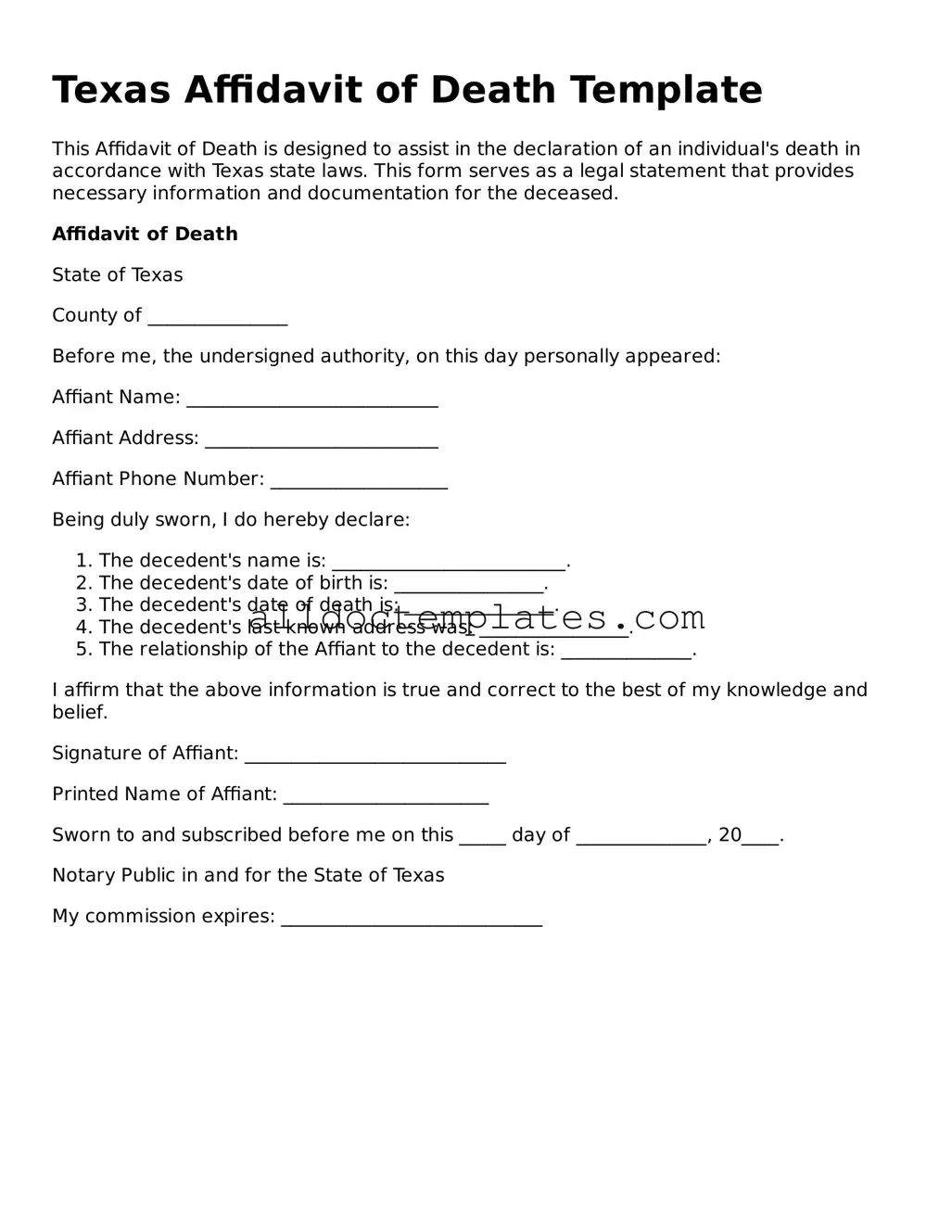Texas Affidavit of Death Template
This Affidavit of Death is designed to assist in the declaration of an individual's death in accordance with Texas state laws. This form serves as a legal statement that provides necessary information and documentation for the deceased.
Affidavit of Death
State of Texas
County of _______________
Before me, the undersigned authority, on this day personally appeared:
Affiant Name: ___________________________
Affiant Address: _________________________
Affiant Phone Number: ___________________
Being duly sworn, I do hereby declare:
- The decedent's name is: _________________________.
- The decedent's date of birth is: ________________.
- The decedent's date of death is: ________________.
- The decedent's last known address was: ________________.
- The relationship of the Affiant to the decedent is: ______________.
I affirm that the above information is true and correct to the best of my knowledge and belief.
Signature of Affiant: ____________________________
Printed Name of Affiant: ______________________
Sworn to and subscribed before me on this _____ day of ______________, 20____.
Notary Public in and for the State of Texas
My commission expires: ____________________________
